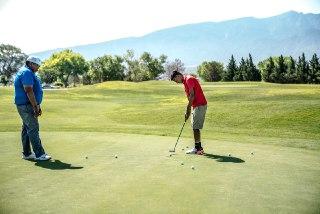
If you are an avid golfer, chances are you have taken at least one lesson in your life in hopes of becoming a better player. In 2018, there were approximately 21 million lessons given, with an average golfer taking 5 lessons costing approximately $50 dollars apiece. In an estimate, the golf instruction industry is approximately $1 billion dollars. There also has been a constant increase in the number of golfers that take professional instruction. Data taken from 2012 shows that 2.8 million people took lessons, representing 11% of the golf population. In 2018, there were 4 million people taking lessons representing 17% of the golf population. While some golfers approach the game without taking a lesson, creating their “homemade” swing, the data shows golf instruction is strong.
A question that arises is who actually takes golf lessons? First off, data shows that golfers that are skilled and avidly play are more likely to seek professional instruction, while higher handicap golfers are less likely to seek help. This makes sense because golfers who are better probably have received this instruction. However, since approximately two-thirds of golfers shoot over 90, the non-skilled golfer represents the largest share of the golf instruction revenue.
Taking a deeper dive, male golfers represent about three-quarters of the golfer population and are the majority of those who take professional golf instruction. However, females are more likely to take lessons. A total of 14% of the male golf population took forms of instruction in the past year, with the percentage increasing to 15% for the female golf population. Women golfers are more likely to participate in group lessons, with adult males across all generations gravitation towards individual lessons. Junior golfers (ages 6-17) take the most lessons (approximately 7), which is twice as many as most of the other age groups. Many instructors offer junior golfers the opportunity to be apart of junior golf camps or clinics during the summer, exposing kids to the game of golf in a fun way.
One aspect of golf instruction that is drastically changing is the increasing number of websites and social media platforms offering instruction. Overall, approximately 64% of core golfers indicate that they watch golf instruction online, whether it be tips from Youtube or Instagram or other website platforms. The majority of golfers intaking this instruction are typically 18-34 age groups, who are more likely to engage in social media platforms. The National Golf Foundation admits that they have very limited data concerning online instruction and the scope it brings to the industry. With the technology age that has engulfed every aspect of modern life, online instruction will likely continue this shift towards websites and social media outlets.








